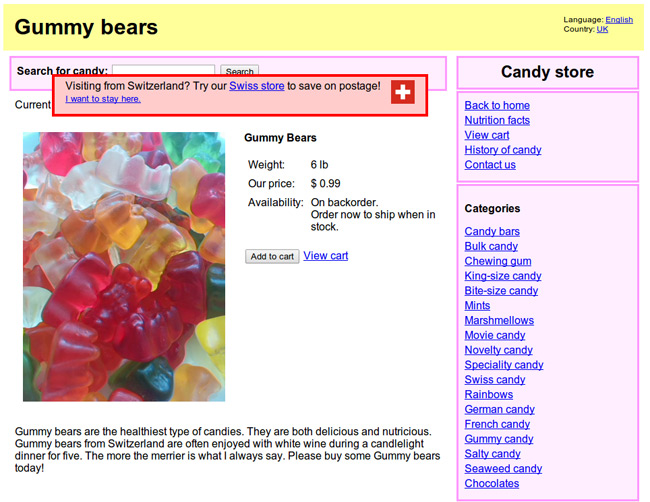Google has shared guidelines on how to create the right homepage on your website and serve the appropriate content to users depending on their language and location. You can configure your homepage or landing page in three different ways for users to access it. Mentioned below are recommendations for each method:
- Show Everyone the Same Content: You can serve specific content on your homepage to a particular country and language. Anyone who directly uses that URL or searches for that URL can see that content. For this, all country and language versions should be accessible on their own unique URLs.
- Let Users Choose: You can also serve a country selector page on your homepage and let users choose the content based on the country and language of their choice. Users typing in that URL can access the same page. You can use the x-default rel-alternate-hreflang annotation for the country selector page, to help Google recognize those pages that are not specific to one particular language or region.
- Serve Content Depending on Users’ Localization and Language: Finally, you can also automatically serve content to users based on their location and language settings. You can do this either by using server-side 302 redirects or dynamically serving the right HTML content. Use the x-default rel-alternate-hreflang annotation on the homepage and generic page even if the generic page is a redirect page.
Users for whom you do not have a specific version can be redirected and served the content that is most appropriate for them.
Whichever configuration you adopt, ensure that you use rel-alternate-hreflang annotations in all pages and see to it that the pages are not blocked for Googlebot crawling or indexing. Moreover, the configuration should be such that users can switch from one language to another if they want. While annotating your pages remember to:
- If a page links to another page, the second page must link back to the first. If this is not done then there are chances that your annotations may not be interpreted accurately.
- The annotations should be self-referential.
- You can specify the rel-alternate-hreflang annotations in the HTTP header, in the head section of the HTML, or in a sitemap file. But choose only one way, to avoid inconsistent signals and errors.
- The value of the hreflang attribute must be in ISO 639-1 format for the language, and in ISO 3166-1 Alpha 2 format for the region. Google does not support specifying only the region.






